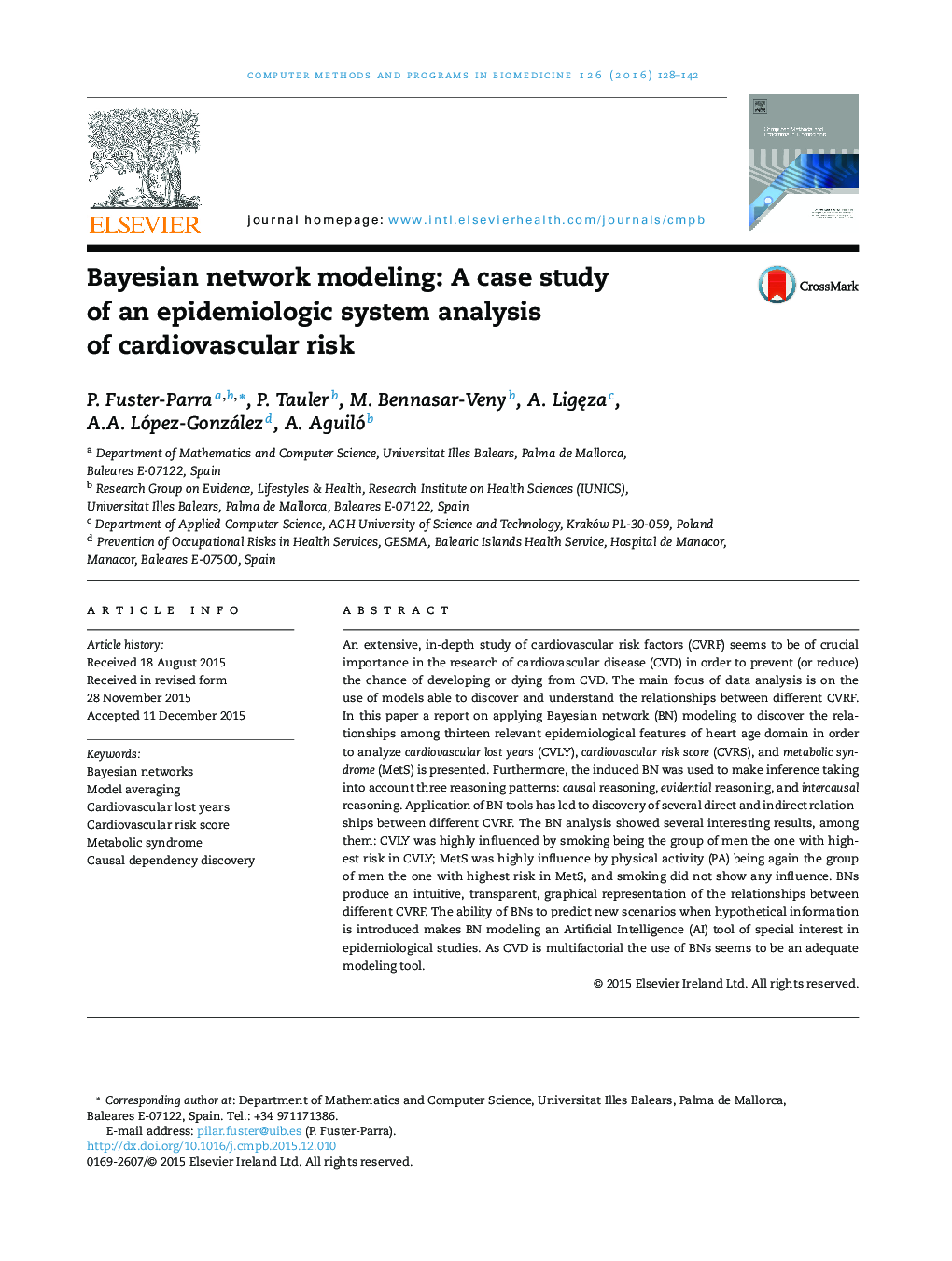| کد مقاله | کد نشریه | سال انتشار | مقاله انگلیسی | نسخه تمام متن |
|---|---|---|---|---|
| 467620 | 698084 | 2016 | 15 صفحه PDF | دانلود رایگان |
• An epidemiologic system analysis of cardiovascular risk is presented through a Bayesian network model.
• The Bayesian network model can serve as a generic tool for application oriented activities: explanation, prediction, monitoring and prevention.
• Due to cardiovascular disease is multifactorial, the application of this kind of model is of special interest, both from theoretical and practical point of view.
• The induced Bayesian network was used to make inferences taking into account three reasoning patterns: causal reasoning, evidential reasoning, and intercausal reasoning.
An extensive, in-depth study of cardiovascular risk factors (CVRF) seems to be of crucial importance in the research of cardiovascular disease (CVD) in order to prevent (or reduce) the chance of developing or dying from CVD. The main focus of data analysis is on the use of models able to discover and understand the relationships between different CVRF. In this paper a report on applying Bayesian network (BN) modeling to discover the relationships among thirteen relevant epidemiological features of heart age domain in order to analyze cardiovascular lost years (CVLY), cardiovascular risk score (CVRS), and metabolic syndrome (MetS) is presented. Furthermore, the induced BN was used to make inference taking into account three reasoning patterns: causal reasoning, evidential reasoning, and intercausal reasoning. Application of BN tools has led to discovery of several direct and indirect relationships between different CVRF. The BN analysis showed several interesting results, among them: CVLY was highly influenced by smoking being the group of men the one with highest risk in CVLY; MetS was highly influence by physical activity (PA) being again the group of men the one with highest risk in MetS, and smoking did not show any influence. BNs produce an intuitive, transparent, graphical representation of the relationships between different CVRF. The ability of BNs to predict new scenarios when hypothetical information is introduced makes BN modeling an Artificial Intelligence (AI) tool of special interest in epidemiological studies. As CVD is multifactorial the use of BNs seems to be an adequate modeling tool.
Journal: Computer Methods and Programs in Biomedicine - Volume 126, April 2016, Pages 128–142
